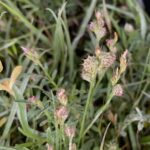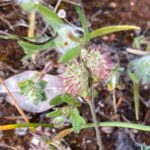Ονοβρυχίδα η κοκοροκέφαλη
Etymology of Onobrychis caput-galli: The name of the genus, "Onobrychis", is Ancient Greek, "ὀνοβρυχίς" [onovrychis], and derives from "ὀνος" [onos], meaning "donkey" and "βρυχίς" [vrychis], meaning "feast, symposium" because according to the ancient Greeks, the donkeys were having a feast devouring Onobrychises. Latin "caput-galli" means "rooster's head", because of the resemblance of the spiky purple-tipped-spine fruits that are said to resemble cockscombs.
There are four Onobrychis taxa in the wild Cypriot habitat.
Onobrychis caput-galli is a neither common nor a rare plant in Cyprus. It exists in all the districts of Cyprus, except the northwestern part, at an altitude of up to 1000 metres primarily on the unfertile ground, cultivated fields, and grasslands. Its flowering period is from February until May.
How to identify Onobrychis caput-galli:
It has similar flowers as Onobrychis aequidentata, and crista-galli, but it differs from aequidentata primarily due to its peduncles that are generally shorter than subtending leaves, something that is opposite for aequidentata, which has very long peduncles.
Aequidentata has a kidney-shaped pod with a crest of regular deltoid lobes; its calyx-tube is pilose. Caput-galli has pods with a crest of slender spines; additionally, its calyx-tube is glabrous. Crista-galli has pods with a crest of flattened, deltoid or truncate, denticulate lobes; additionally, its calyx-tube is pilose.





